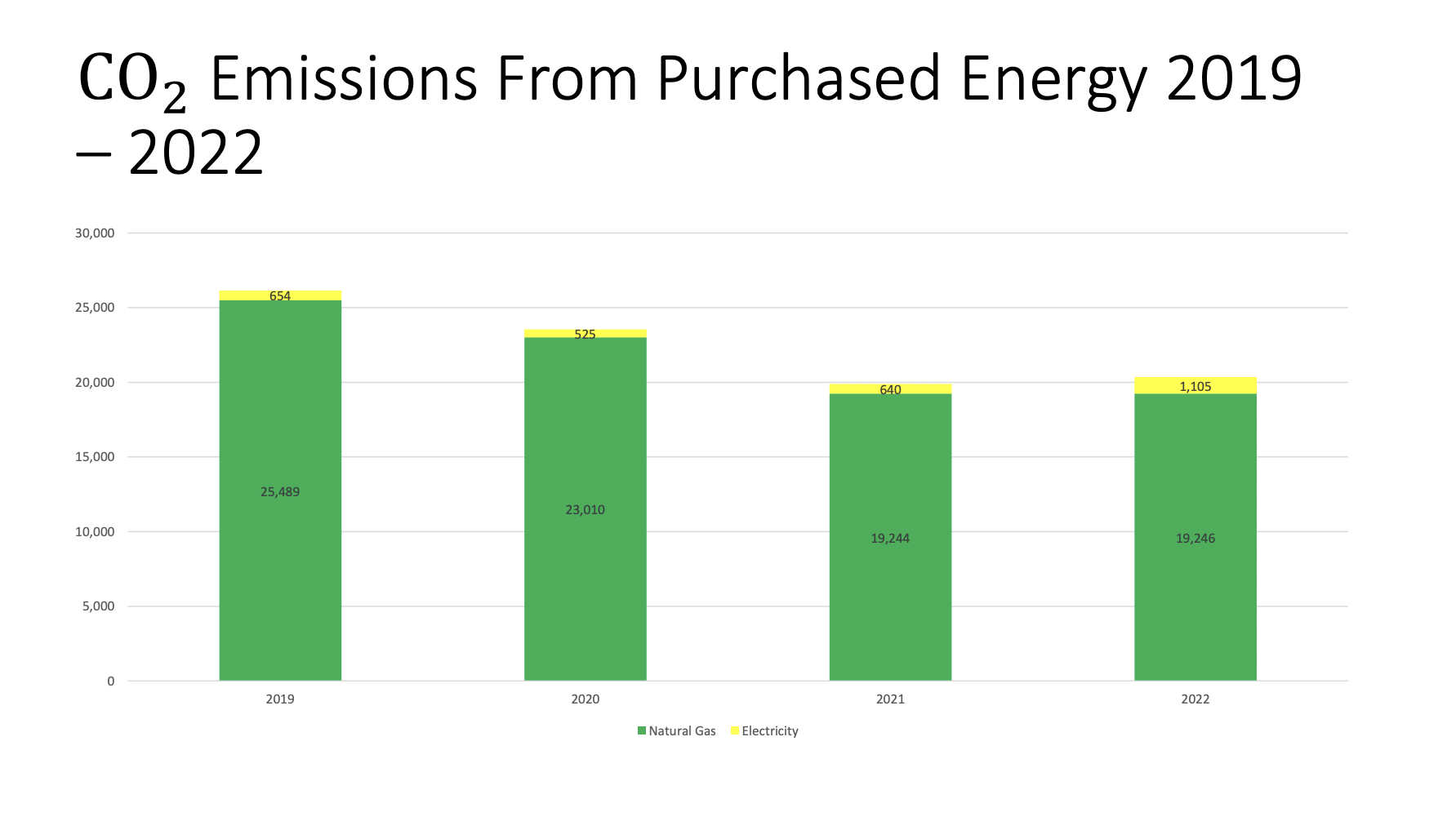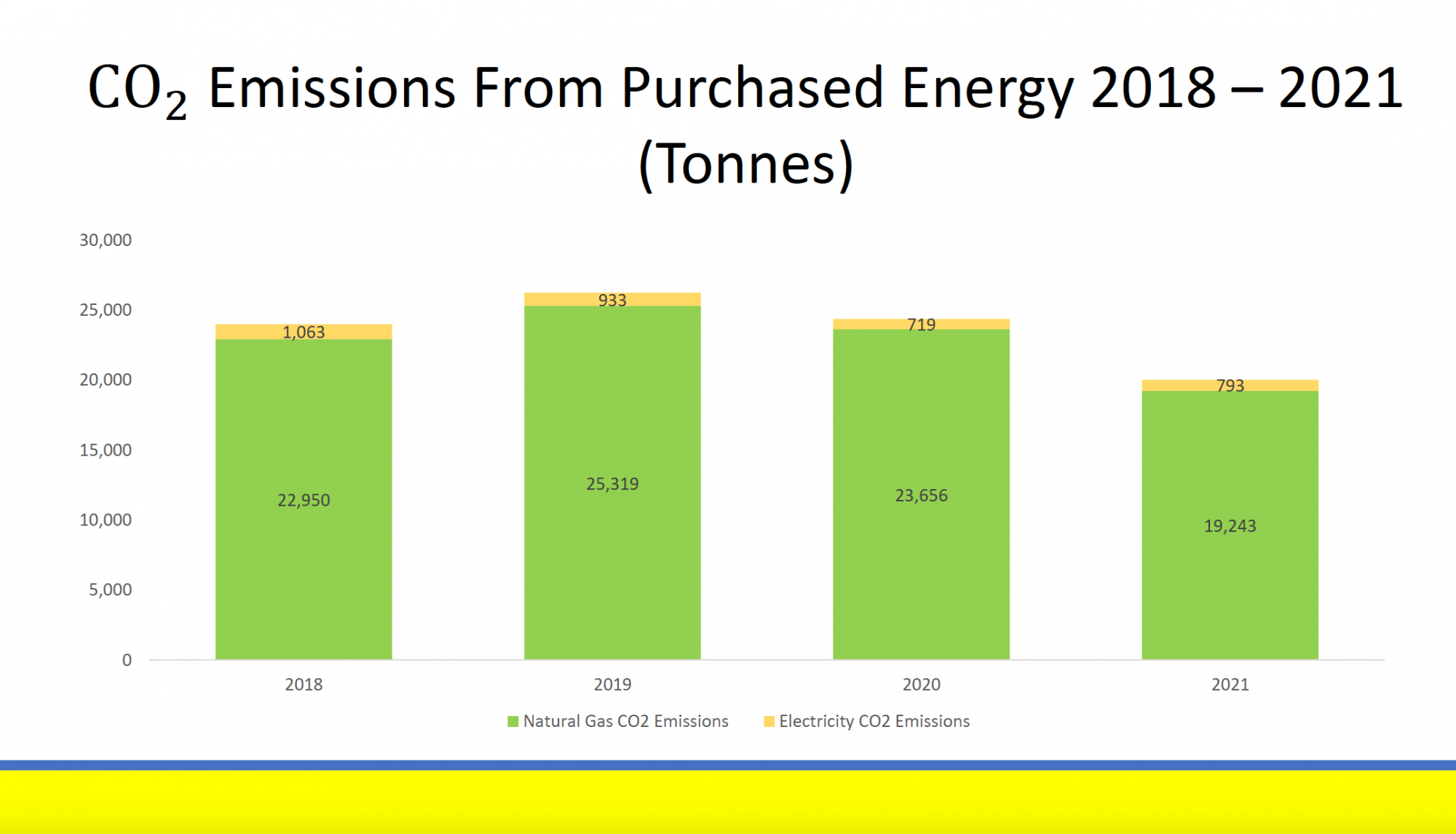The university sets out to achieve carbon neutrality by 2050, with an interim target of 45% reduction of greenhouse gas (GHG) emissions by 2030, from 2019 emissions. UWindsor is proud to officially announce and present the Campus Carbon Neutral Masterplan, the roadmap outlining our strategy to reducing GHG emissions and increasing energy efficiency on campus.
The Campus Carbon Neutral Masterplan, Board-approved in December 2023, is a the roadmap outlining the University's strategy to reduce GHG emissions, improve conservation efforts and increase energy efficiency on campus.
The University of Windsor has published an Energy Conservation and Demand Management Plan (2024-2029). It has been submitted to the Ministry in accordance with Ontario Regulation 25/23, under the Electricity Act, 1998. The previous report can still be found: Energy Plan (2018).
The University of Windsor energy usage and Scope 1 and Scope 2 GHG emissions reports:
-
GHG Emissions for 2019 -2022

(full reports will be coming soon)
- GHG Emissions for 2018 -2021

(full reports will be coming soon)
Real-time energy dashboard (coming Fall 2023)
The University has received two EnWin GreenStar awards, one in 2010 and the second one in 2018 for the sustainability initiatives.


